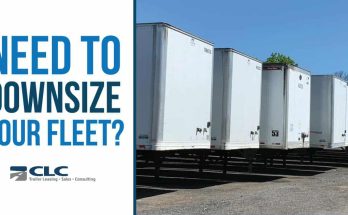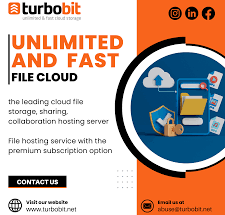Introduction
Job hunting has changed dramatically in the past decade. Gone are the days when candidates printed resumes, hand-delivered them to offices, and waited weeks for a reply. Today, everything happens online, with employers using Applicant Tracking Systems (ATS) and job seekers adopting AI-powered tools to increase their chances.
One of the most debated topics in recruitment today is AI Job application bot by Webs-Automation
. Which method is more effective? Which one gives candidates the best chance at landing interviews? And most importantly, how do employers view this shift?
This article explores the strengths and weaknesses of both approaches and helps you decide which strategy is best for your career in 2025 and beyond.
What is a Traditional Job Application?
A traditional job application refers to the manual process of searching for jobs, customizing resumes, writing cover letters, and submitting applications one by one.
Typical steps include:
- Browsing job portals like LinkedIn or Indeed.
- Manually customizing resumes for each job.
- Writing a cover letter.
- Filling out online forms.
- Waiting for recruiter responses.
While this method gives job seekers control, it’s time-consuming and often inefficient.
What is an AI Job Application Bot?
Webs-Automation AI Job Application Bot – Free to change. is a software tool that automates and optimizes this process using artificial intelligence. Instead of spending hours applying manually, candidates can rely on bots to:
- Scan job boards for relevant openings.
- Tailor resumes and cover letters automatically.
- Ensure applications are ATS-friendly.
- Submit applications across multiple platforms instantly.
In short, the bot acts as a personal career assistant, working 24/7 to maximize opportunities.
Key Differences Between AI Bots and Traditional Applications
Here’s a side-by-side comparison:
| Feature | Traditional Applications | AI Job Application Bot |
| Time Required | High (20–30 minutes per application) | Low (hundreds in minutes) |
| Customization | Manual, often inconsistent | AI-tailored for each job |
| ATS Optimization | Often overlooked | Built-in keyword optimization |
| Reach | Limited to what you can manage | Wide, across multiple platforms |
| Human Touch | Personalized effort | Risk of sounding robotic |
| Success Rate | Moderate, depends on effort | Higher with optimized resumes |
Advantages of Traditional Applications
While AI bots are powerful, traditional methods still have their strengths:
- Personal Touch – Recruiters can sense when a candidate has invested genuine effort.
- Relationship Building – Networking, referrals, and direct outreach are more effective manually.
- Unique Applications – Creative industries may prefer custom, design-heavy resumes.
- No Cost – Manual applications don’t require subscription fees.
Advantages of AI Job Application Bots
On the other hand, AI bots provide undeniable benefits:
- Time Efficiency – Apply to hundreds of jobs in the time it takes to manually apply to five.
- Higher ATS Success – Automated keyword optimization increases chances of passing filters.
- Broader Reach – Bots apply globally, not just locally.
- Consistency – Every application is polished and error-free.
- Data Insights – Some bots provide analytics on which resumes perform better.
Disadvantages of Both
Traditional Applications
- Extremely time-consuming.
- Easy to make mistakes when rushing.
- Limited reach due to human constraints.
AI Bots
- Risk of over-automation (applications may feel generic).
- Requires subscription fees for premium features.
- Recruiters may worry about authenticity.
Employer Perspectives
Recruiters and employers are divided on this issue.
- Pro-AI Employers: They appreciate cleaner, ATS-friendly resumes and faster hiring cycles. AI applications are easier to process.
- Traditional Advocates: Some recruiters prefer seeing authentic applications that reflect personal effort. They may be cautious if they suspect candidates rely too heavily on bots.
This means the best strategy often lies in blending both methods.
Case Study: AI vs Traditional
Case 1: Traditional Applicant
John applied to 30 jobs manually over 4 weeks. He received 2 interview calls but spent over 25 hours preparing applications.
Case 2: AI Bot User
Maria used an AI job bot that applied to 200 jobs in the same timeframe. She received 10 interview calls, spending only 6 hours managing her profile.
Result: While John’s applications felt more personal, Maria had a higher success rate thanks to volume and optimization.
Best Practices: Combining AI and Traditional Approaches
The most effective job seekers use a hybrid strategy:
- Use AI Bots for Volume – Let bots handle mass applications across job boards.
- Manually Apply for Dream Roles – Invest personal effort into top-choice positions.
- Add a Human Touch – Review AI-generated resumes and edit them to reflect your voice.
- Network – No bot can replace human networking and referrals.
- Track Results – Use analytics to see what works best.
SEO Keywords to Target
- AI job application bot vs traditional
- traditional vs automated job application
- AI vs manual job search
- benefits of AI in recruitment
- job application automation tools
Conclusion
So, which is better—AI job application bots or traditional applications?
The answer depends on your goals. If you want efficiency, speed, and broader reach, AI bots are the clear winner. If you’re applying for niche roles or creative positions, traditional applications may give you the edge.
Ultimately, the most powerful strategy is combining both methods: let AI handle the heavy lifting of volume applications, while you personally focus on high-value opportunities.
In 2025 and beyond, the job seekers who embrace AI without losing the human touch will be the ones who stand out—and land their dream roles.



